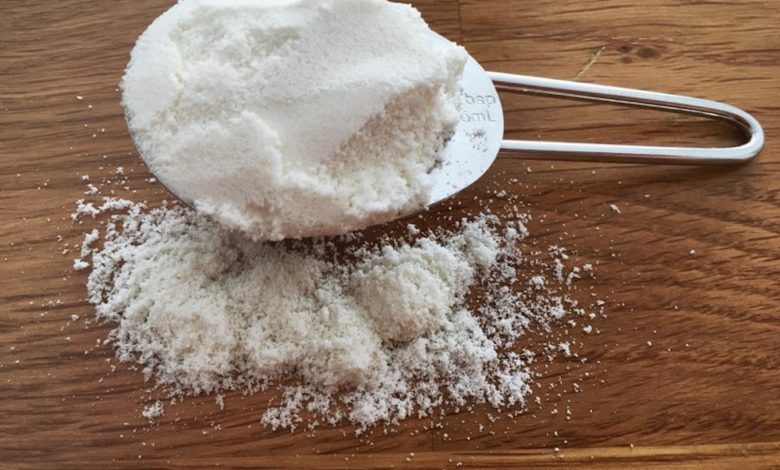
What Is Modified Food Starch?
With so many products that are offered on the shelf, it is quite difficult to understand which ones are healthy and which ones aren’t. Many people make a habit of reading the ingredients mentioned at the back of every food product to ensure that they do not buy something that may cause severe damage to their health. Most of the ingredients mentioned are added as preservatives, flavor enhancers, or to increase the shelf life or the food products, and they are not easily recognizable by a regular person. One such questionable ingredient is starch.
In general, starch is nothing but complex carbohydrates and is produced by most greens to store energy. It is the most common carbohydrate in the human diet and can be found in many staple foods, such as corn, rice, wheat, potatoes, and other root vegetables. As they have thickening properties, they are often used in food, especially in soup, stews, and gravies. It is also an important ingredient in gluten-free cooking.
In general, there are two varieties of starch, namely native starch and modified starch. Native starch is naturally derived from vegetables, and the most common types used in cooking include corn starch, arrowroot starch, potato, and tapioca starch. It is also considered the protein in gluten-free flour. Starch is used for several purposes in a kitchen, from binding gluten-free flours to changing the consistency of gravy. While native starch is naturally derived, modified starch is not.
What Is Modified Food Starch?
Just like starch, modified food starch is a complex carbohydrate that has had one or more of its components physically, enzymatically, or chemically altered. It is extracted from grains and vegetables that have been treated to improve their ability to keep the structure and texture of the food. The word ‘modified’ does not refer to starch that is genetically altered or produced from genetically modified organisms. However, some of the starch may be produced from genetically modified ingredients.
Starch is modified for several reasons like:
- To increase the shelf life of the food product
- To increase the ability to stand different temperatures, such as freezing or excessive heat
- To improve the texture, taste, and stability of the food item
- To act as a better choice as thickening or shortening agent
People now want manufacturers to meet their expectations without fail, such as being served with food as and when they want. This expectation has increased the demand for processed food and beverages. To meet this demand, manufacturers are striving to process food and beverages that can withstand severe processing and storage conditions. Starch is the ingredient that acts as a backbone to many creations. When the unmodified form of starch – called the native starch – does not possess the functionality that is needed, it is modified. Modified starch is used in an effort to optimize a product’s texture, taste, stability, increase its ability to blend, maintain high viscosity under acidic conditions, and so on.
Food starch is modified to suit certain needs of the food item that otherwise would not be provided. By adding modified food starch, the taste, texture, structure, and shelf life is enhanced, which is a vital trait in the food industry.
Modified food starch is often used in foods that are marketed as instant due to the thickening properties that it offers, such as pudding, soups, and gravy, among others. Its purpose in food is to act as a binding, thickening, or gelling agent. But the most vital property is how it replaces gluten and makes gluten-free cooking possible.
Genetically Modified Starch
Modified food starch is not to be confused with genetically modified food starch, as there is a significant difference between the two. While modified food starch refers to starch that is altered chemically, physically, or enzymatically, genetically modified food starch has a whole different meaning. It refers to starch that is made from genetically engineered plants. Genetically engineered plants are altered to produce carbohydrates or novel fatty acids that might not arise in the plant species that are harvested. It also refers to starch that has been created by traditional cross-breeding of plants rather than gene merging.
In the case of genetically modified starch, the term modification refers to the genetic engineering of the plant DNA, whereas in the case of modified food starch, the term modification refers to the later treatment or processing of the starch or starch granules. ‘Genetically modified’ on the other hand, differs from one territory to another. It is vital to understand what it stands for in the place you reside or eat in.
Genetically modified starch is recognized under several names based on how they are modified and what is used to modify them. Some of the names by which modified food starch is labeled and can be identified under include dextrin roasted starch, alkaline treated starch, oxidized starch, and acetylated distarch adipate, among others.
An INS number is assigned to these names to identify each additive. For example, for enzyme-treated starch, the INS number is 1405. In the United States, modified food starch is considered a food additive, and the US Code of Federal Regulation clearly defines the limits of its modification, use and labeling.

How Is Starch Modified?
There are several ways in which food starch is easily modified. Some of the ways to modify food starch include the following:
- Treating the starch with an acid, such as hydrochloric acid
- Dextrin, or roasting it with hydrochloric acid
- Processing it with various bases, such as lye
- Treating with bleaching agent, like peroxide
- By adding salts, such as sodium phosphate, potassium phosphate and alike
- Using potassium hydroxide to treat food starch
- Treating the starch with sodium hydroxide
- Using starch ether to treat food starch
- Processing food starch with emulsifiers
- Adding a positive electrical charge to the starch
- Adding a negative electrical charge to the starch
Each different treatment will alter the starch differently, which in turn will result in different properties. A starch may be subject to one or more than one treatment to alter it if the expected result is not attained. Irrespective of the type of food treatment used, it will always be listed on labels by way of ‘modified food starch.’
Uses for Modified Food Starch
Food starch is improved to make it convenient to use in some recipes. Modified food starch has several uses that include the following:
- It can be used as a thickening agent like a regular starch.
- It helps to increase the shelf life of food products.
- It is used on some candies like jelly beans to give them a hard, outer shell.
- It can be used in foods, especially the low-fat ones, as a substitute for fat. This is to give it the food the consistency of its full-fat variety.
- It is used in salad dressing, as it acts as an emulsifier and keeps the oil from separating.
- It is used to store the thawed frozen edibles from dripping water.
- It is added to food to make them stickier.
- It helps powdered foods, such as powdered cheese sauce and gravy, from having a lumpy or uneven consistency when mixed
- It makes a product easier to dissolve in cold milk or water for instant gelatinized recipes
Modified food starch serves several purposes when it is added to a food item. But each purpose is different.
Modified Food Starch and Gravy
Modified food starch is added to mass-produced instant gravy for several purposes. Some of them include:
- Enables the gravy to impart freeze-thaw stability
- Helps maintain a smooth texture
- Enables the product to withstand processing
- Helps to bind water when the gravy is reheated by the end consumer
Modified Food Starch as a Stabilizing Influence
Clever and convenient packaging is not everything that a customer is looking for. Salad dressing, kinds of ketchup, and many such items are available in easy-to-squeeze bottles. But that’s not the reason behind the success of the food product. The stabilizing properties are a blessing from the modified food starch added to the food item. It increases the product viscosity by stabilizing the emulsion and provides fat-like characteristics.
Modified Food Starch in Confectionery
The use of modified food starch in the confectionery industry is fairly simple and straightforward. The world of confectionery uses starches that require minimal heat processing. They are often thin-boiling starches that are partially hydrolyzed and have lower viscosity when heated. This allows them to be used in high concentration in a product such that, when cooled, they provide the chewy candy texture that children enjoy. Modified food starch is also used to give jelly beans a hard, outer cover, yet another purpose of the starch in the confectionery industry.
Modified Food Starch to Add Heaviness
Modified food starch is used in desserts such as fudge and puddings to provide it with a lighter, creamy texture and a heavier mouthfeel. It often uses modified waxy maize starch, which is moderate to highly crosslinked. The crosslink depends on how much heat dispensation the product undergoes during production. Modified food starch is used as a thickener that must be able to withstand a fair amount of heat as well. While a starch with substitution provides a light and creamy texture, the heavier mouthfeel is provided by a waxy dent or tapioca starch.

Foods that Contain Modified Food Starch
There are numerous food items that have modified food starch as an ingredient to serve several different purposes. The variety of food includes the following:
- Canned soups
- Chips
- Candy and other confectionery items
- Cheese sauce, salad dressing, and such
- Capsules that contain medicine
- Frozen and processed foods
- Instant pudding
- Instant gravy
- Low fat ice cream
- Powdered coated food, such as cocoa-dusted almonds
Modified food starch is added to each food item for a different purpose. The starch can be modified differently for a different purpose, but the intention of adding it to food items is to provide a food item that has a good texture, taste, and structure and long shelf life.
Relation Between Gluten Sensitivity and Modified Food Starch
Gluten is a family of proteins that is found in grains like rye, wheat, and barley, with wheat being the most commonly consumed. The name is derived from the glue-like property of wet dough. Gluten is a controversial topic now, with almost 30 percent of the Americans trying to avoid its consumption. It has two main proteins, glutenin and gliadin, among which, gliadin is believed to be responsible for most of the health problems. While some believe that it is safe for everyone except those suffering from celiac disease, health experts believe that it is harmful to almost everyone.
Many people are advised by their healthcare provider to avoid gluten and consume only gluten-free food for good health. They may be advised to give-up food products and beverages containing modified food starch and avoid products if they are not made with starch derived from wheat.
If you are sensitive to gluten, you may experience the following side effects:
- Diarrhea, constipation, and smelly feces
- Unexplained bloating
- Abdominal pain
- Migraine like headaches
- Depression
- Skin problems, such as blistering
- Unexplained weight loss
- Feeling extremely tired
- Anemia or iron deficiency
- Anxiety
- An autoimmune disorder, such as Celiac disease
- Muscle and joint pain
- Numbness in the legs and arms
- Brain fog or being unable to think clearly
Experts are worried about cross-contamination of food items with gluten. Modified food starch may be considered gluten-free. But this does not mean that the food item does not have another gluten-containing ingredient in it. If the label reads that the food is made using modified food starch, it doesn’t mean that the food item is free from gluten. Unless the company follows strict adherence to not use any ingredient with gluten, it cannot claim to be gluten-free. It also includes the use of flours containing gluten used on the conveyor belt to keep the food product from sticking and the like. Cross-contamination is a serious issue that gluten intolerant individuals have been facing and needs to be addressed immediately. It is important to keep in mind that food industries using modified food starch may or may not be following strict gluten-free guidelines.

Effects of Modified Food Starch
Starch in itself is a source of several problems, and its chemically, physically, or enzymatically altered version is nothing short of trouble. Modified starch is likely to be treated with chemicals such as sulfuric acid, chlorine, and such that are altogether not safe for consumption. The treatment of natural starch with less than desirable chemicals only increases the risk of contamination and paves the way to health problems.
The health risks of consuming food products with modified food starch is a debatable topic. Just like many other ingredients, it has its set of good and bad. Whether the starch is good for you or not depends on how the starch was modified, how sensitive you are, and how your body can have a reaction to the chemicals present. It is definitely not suitable for babies, as they may have difficulty digesting modified starch.
There is some research indicating that modified corn starch poses a threat to your health. Most times, it is added in processed food that also contains high fructose corn syrup in the form of sugar, sodium, and fat, among other additives. Consuming processed food regularly may be detrimental to your health, as it increases the intake of empty calories from sugar, sodium, saturated fat, and such.
Modified food starch contains a flavorless powder that is active as a binding agent called maltodextrin, as well as a flavor-enhancing agent called monosodium glutamate (MSG).
Maltodextrin has certain side effects that include:
- Sudden weight gain
- Wheat allergy-like symptoms, such as itching, asthma, and rashes, among others
The side effects of monosodium glutamate include:
- Chest pain
- Flushing
- Facial tightness or extreme pressure
- Headache
- Heart palpitations or rapid fluttering heartbeat
- Nausea
- Sweating
- Tingling, burning, or numbness in the face, neck, and other areas
- Weakness
Not every person who consumes food containing MSG experiences these side effects. It is experienced by those who are sensitive to monosodium glutamate.
As most companies that use modified food starch need not adhere to guidelines for a gluten-free production, if you are sensitive to gluten, there is a possibility that you may experience the side effects of gluten intolerance.
Some of the possible short-term side effects of modified food starch include the following:
- Allergic reaction to gluten
- Chest pain
- Nausea
- Headaches
- Heart palpitations
Some of the possible long-term side effects of modified food starch include the following:
- Side effects from chemical contamination
- Weight gain
Lastly, if you are conscious of your weight, you must watch out for modified food starch. As it is calorie-dense, it aids in weight gain.
Avoiding Modified Food Starch
There may be several reasons why you want to avoid consuming foods containing modified food starch. As monosodium glutamate and maltodextrin are a part of it, to avoid side effects caused by them, you can simply avoid foods that contain modified food starch. If you are sensitive to gluten and are worried about gluten intolerance, you can avoid it in a few ways like:
- Study the label: Every company that produces gluten-free food item mentions it in the food package boldly, or at least in the label. Study the label and look for gluten-free variants. If it is mentioned, it means that the company follows the guidelines, has undergone testing, and is certified safe for consumption.
- Contact the manufacturer: The United States Food Administration mandates the accountability of manufacturers with respect to the food they produce. If there is no clarity on whether the food product is safe for consumption, you can call the company that has manufactured a certain food that interests you and ask if it is gluten-free. It is always better to contact the manufacturer when in doubt.
- Consume more whole foods: Whole foods, such as fruits, vegetables, and meat, do not have gluten, and neither are they contaminated with added ingredients and food additives like modified food starch.
- Educate yourself about what you eat: Double check any food item that contains modified food starch. Though there is no gluten in it, every food item with modified food starch is not gluten-free. Some gluten may be added to the product due to cross-contamination. Either avoid consuming such food completely, or contact the manufacturer to understand whether any ingredient that has gluten was used during the process.



